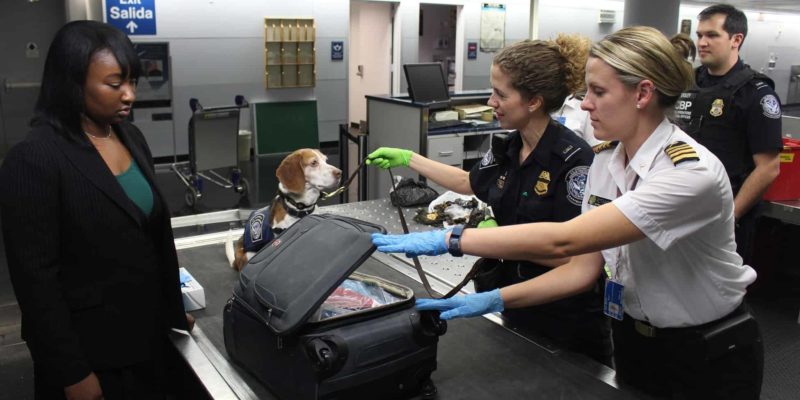Has the Embassy approved your Schengen Visa application?
Congratulations! We hope you will enjoy your trip to Europe and Schengen Countries.
However, please note that your Schengen Visa does not guarantee your entry into the Schengen Area.
Even though you are a Schengen Visa holder, you are still subject to immigration control, and the border guards can ban you from entering the Schengen Area (for further details, please check the Schengen Borders Code (SBC) here).
Anyway, you don’t need to worry as this is not a common situation.
To avoid any problems at Schengen border checks, we suggest you carefully read this blog post.
You will learn everything you need to know about the Schengen Visa immigration control for foreign nationals and how to cross the Schengen external borders successfully.
Table of contents:
- 3 key elements to consider when crossing the Schengen borders
- Schengen immigration control and the entry port – A few considerations
1. 3 Key Elements To Consider When Crossing The Schengen Borders

According to the Schengen Agreement and Schengen Visa policy, you can freely travel within the 27 Schengen Area countries, without internal borders controls.
This means that you are subject to immigration control at border crossing points only when:
- You enter a Schengen Member State using your Visa for the first time.
- You hold a double-entry or multiple-entry Visa and cross the borders (where you have to pass through immigration control), exit the Schengen Area, and re-enter it. In this case, you will pass through the immigration control at border crossings every time you re-enter the Schengen Area using the same Visa.
As we mentioned before, your Schengen Visa does not grant you entrance into the Schengen Area.
Below you will find the rules and entry requirements you should consider when crossing the Schengen borders.
- The 90/180-day rule
According to the 90/180-day rule for short-stay Schengen Visas, you must not spend more than 90 days within 180 days in the Schengen Area.
We recommend you use our Visa calculator to calculate the remaining days under a Schengen short-stay Visa.
If you break the 90/180-day rule, the immigration control authorities may ban you from entering the Schengen Member States.
For further information about the 90/180-day rule, please check out this guide.
- Carrying relevant documents
According to the European Commission (question no. 16), “at border (or during other controls) you may have to show the visa but also provide additional documentation, for example information on that you have sufficient means to cover the stay and the return trip. It is therefore recommended that you carry with you copies of the documents, which you presented when applying for the visa (e.g. letters of invitation, travel confirmations, other documents stating the purpose of your stay).”
Therefore, you must carry with you relevant documents when crossing the Schengen borders, such as:
- Passport – Please make sure you do not misplace your passport with your Schengen Visa.
- Proof of subsistence means – For example, your bank statements or any other evidence of subsistence means you submitted to the Embassy.
- Proof of travel insurance – You must show the border authorities your Schengen Visa health insurance with a minimum of 30,000 EUR coverage.
- Flight and hotel reservations – You can also carry with you other proof of transport and accommodation, such as a car rental receipt or accommodation sponsorship letter.
- Other supporting documents – You must present any other relevant documents concerning your trips, such as an invitation letter or the documents that show your travel purpose.
3. Your Schengen Visa validity
You can cross the borders of a Schengen country with a valid Schengen Visa only.
Thus, you must use your Schengen Visa within a specific period.
On your Visa sticker, you should carefully read the label called “Until”. According to the Schengen state that issued your Visa, this label can be in different languages (e.g., Au – French, Al – Italian and Spanish, Bis – German, etc.).
This label indicates the latest date when you can use your Visa (your Visa validity expiration date).
To learn more about your Schengen Visa sticker, please check out this post.

In summary, breaking the 90/180 rule, not carrying relevant documents, and travelling with an expired Visa are the most common reasons why travellers get banned from entering the Schengen Area when crossing the land borders.
As a general rule, please note that the border authorities may prevent a traveller from entering the Schengen Area if they have reasons to believe that their Schengen Visa is not genuine.
Immigration authorities can also ban a traveller from crossing the Schengen borders if they have strong reasons to believe they must not enter the Schengen Area (e.g., they have a criminal background).
2. Schengen Immigration Control And The Entry Port – A Few Considerations

Many travellers are worried they may get banned from entering the Schengen Area if they choose the wrong entry port.
One of the most common questions that Schengen Visa applicants are asking is: “Can I enter the Schengen Area in a country that is not the same as the country that issues my Visa?”
The short answer is yes, you can.
The immigration authorities won’t ban you from entering the Schengen Area if your entry port is different from the country that issued your Visa.
The European Commission (question no. 6) outlines that “you may cross any Schengen border with a Visa issued by any Schengen country.”
However, you must remember that you are required to submit your application to the Embassy or Consulate of the country where you will spend most days when you plan to visit more than one Schengen country.
For example, if you plan on spending ten days in France and 20 days in Germany, you must submit your application to Germany’s Embassy in your country of residence, but France can be your first entry port.
Therefore, your first entry port does not need to be the country whose Embassy or Consulate has issued your Visa.
More information about the Schengen Visa first post of entry can be found here.
Do note that it is important to carry with you relevant documents concerning your trip. The Schengen border authorities may ask you to show proof of accommodation in the country where you cross the borders.
Suppose you are applying at the Italian Embassy to spend ten days in Italy and 5 in Greece. Greece (or any other Schengen country) can be your first entry port. The border authorities do not require you to enter Italy first. But they are free to ask you for documents concerning your trip to the country where you are crossing the borders (e.g., proof of accommodation).
Important note: Starting from 2022, the Entry/Exit System (EES) will replace the current system of passports manual stamping and border controls for security reasons.

According to the European Commission, the Entry/Exit System (EES) will register travellers from third-countries each time they cross an EU external border. The system will register the traveller’s name, type of travel document, biometric data (fingerprints and captured facial images), and the date and place of entry and exit.
As long as you consider the suggestions in this post, there is no need to worry about the Schengen customs and immigration control.
If you have any further questions concerning this topic, do not hesitate to contact us – We would be more than glad to assist you. If you need to apply for a Visa, feel free to book a FREE Schengen Visa consultation and find out what documents you must submit according to your travel purpose and financial means.
